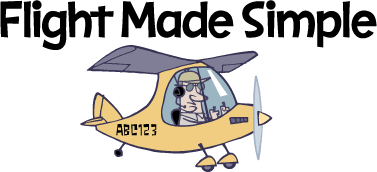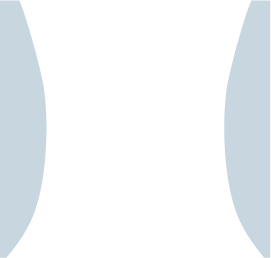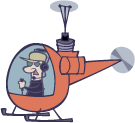
An Easy Way to Understand How Planes Can Fly
Most folks know that planes can fly because they have wings. After all, birds have wings and they fly, right? Still, it’s easy to see how a bird’s wings make it fly, they flap up and down. On the other hand, planes don’t flap their wings. So, how do planes fly?
Now, we could get into all the details of fluid dynamics to explain it, but that’s rather daunting. What we propose is a simpler way to understand what’s happening so a plane’s flight goes from somewhat mysterious to rather obvious. To do that we look at a flying machine that people understand readily, a helicopter.
A helicopter flies using a propeller on top, which they call the rotor. You’ve probably seen films of helicopters flying close to the ground flattening the grass below or creating a cloud of dust. That’s the key to understanding how they fly. The rotor spins pulling great amounts of air from above, pumping it down and below. It basically works just like a ceiling fan, only a lot more efficiently. (Propellers on the front of a plane do the same thing, only they point forward and pump air backwards driving the plane forward.)
This makes the helicopter fly because of what Newton talked about, for every action there is an equal and opposite reaction. The spinning rotor applies a force on the air downward. The reaction from the air is equal and opposite on the rotor upward. The great mass of air pumped downward is called downwash, the reaction upward is lift. I imagine most folks don’t find this hard to understand. It might even seem rather obvious.
Still, one might ask what this has to do with planes. Simple, a helicopter rotor is a rotating wing. It works the same way, doing the same thing as an airplane wing. Both move through the air pumping air down as downwash which creates the reaction of lift.
Here’s a way to make the connection. Imagine attaching a little airplane body to the rotor blade turning each into a little airplane. The two little airplanes spin atop the helicopter doing just what the rotor did, pumping air down as downwash which generates lift in return. The function of the rotating wings don’t change because there is a fuselage attached.
Now then, remove the helicopter so we have two little airplanes spinning on their own. They still fly exactly as before, only without the helicopter body weighing them down. Other than that, nothing has changed, they work the same with or without the helicopter body which wasn’t generating any lift anyway.
A little note here. The animations are, of course, approximations. And they’re in slow motion as otherwise it’d all be a blur. Plus, little planes cannot possibly turn that tightly. Even if they tried, they’d have to bank in the turn, which is a whole other thing. But this is all just to make the points described.
Next, remove one of the planes. Now we have one plane flying around in a circle. Again, one plane works the same without being attached to a second plane at the wingtip. The wings of the remaining plane move through the air, pulling air from above and pumping it down generating lift.
Lastly, imagine the plane flying in ever increasing circles, spiralling outward until it stops turning at all and flies straight. The wings do the same thing moving through the air in a straight line as they do in a circle, they pump air down as downwash and the air reacts on the wings generating lift.

Both helicopters and airplanes move wings through the air pumping air down as downwash which creates the reaction of lift. The difference is a helicopter moves its wings in a circle while an airplane moves its wings in a line. Also, the helicopter body doesn’t spin with its wings while an airplane’s wings and fuselage move together.
There you have it. Pretty simple, really. Once you get this basic point of downwash creating lift you’re ready for the next step, the messy details. If you want all these messy details see links below.
A couple extra tidbits
There is another thing about helicopters, their wings move the helicopter forward as well. The rotor genertates both lift and thrust. This thrust works the same way as lift, only instead of pumping air down the air is pumped back at the same time. It’s like this, a propeller pointing up creates lift. A propeller pointing forward creates thrust. A propeller pointing up and forward creates lift and thrust. The magic of a helicopter is it creates thrust forward, back, left, or right.
Though they look more like planes, birds fly more like helicopters. Bird’s wings are articulated, they move independent of the body. They also use their wings to go forward, for thrust. On the other hand, when birds soar without flapping their wings they fly more like planes, or rather gliders. In any case bird wings generate lift by creating downwash both when flapping or soaring.
© Terry Colon, 2016
Other bits from the flying files:
The Trouble with Airflow Diagrams
If you tuned in for our how planes fly bits, you might like our take on bicycles:















